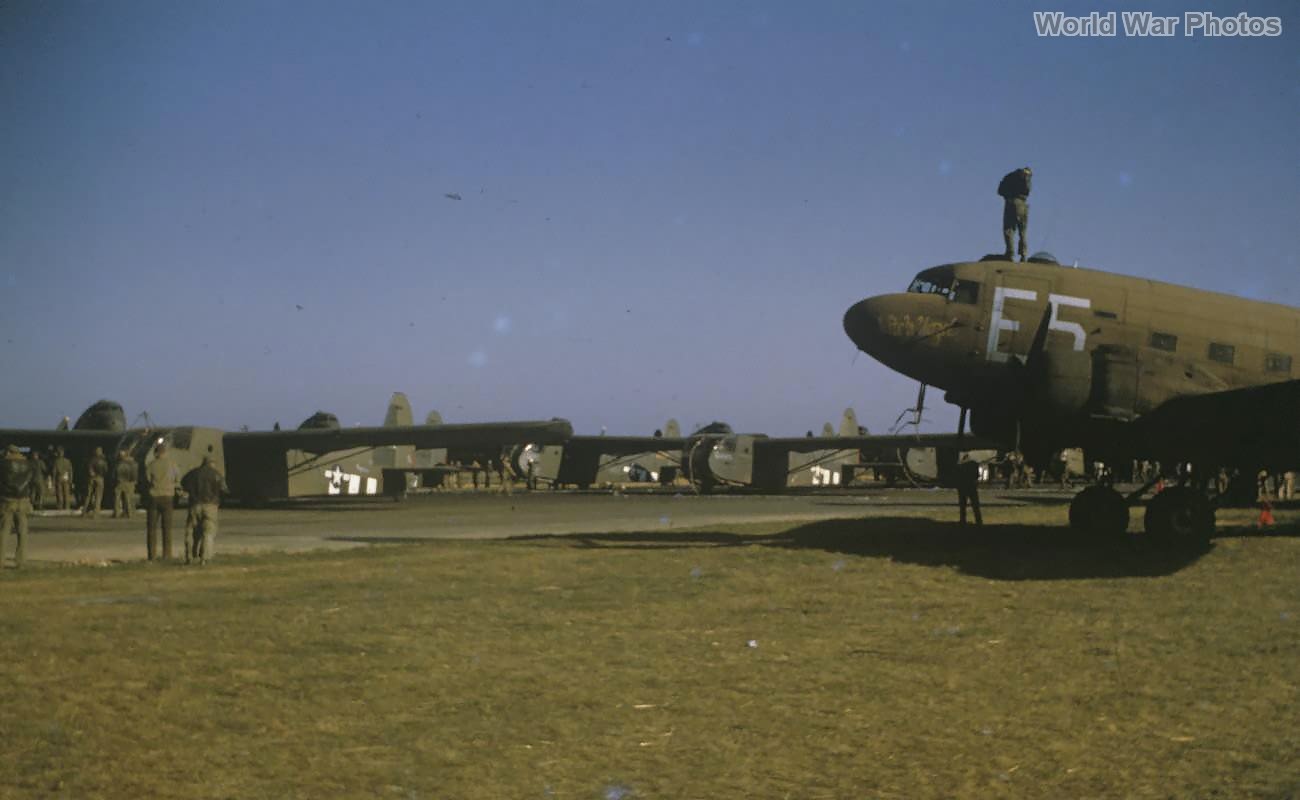The 314th Troop Carrier Group (314th TCG) played a significant role in the airborne operations of World War II, participating in major campaigns such as D-Day, Operation Market Garden, and the crossing of the Rhine. Below is a detailed overview of the group’s activities, organization, and the aircraft they used during the war.
Operational History
Transfer to Europe and Training: The 314th TCG transferred from the 12th Air Force in the Mediterranean area to England in February 1944 to prepare for the invasion of Europe. The group trained intensively for its upcoming missions, focusing on airborne operations.
D-Day (6 June 1944): On D-Day, the 314th TCG’s 51 C-47 and nine C-53 aircraft were used to drop paratroops near Renville, France. Despite challenging weather conditions in the following days, the group successfully carried out resupply missions to support the beachhead, earning a Distinguished Unit Citation (DUC) for its efforts.
Operations Post-Normandy: After the initial invasion, the 314th TCG continued to fly supply missions to the Normandy beachhead until September 1944, supporting the ongoing Allied advance.
Operation Market Garden (September 1944): The 314th TCG participated in Operation Market Garden, the ambitious but ultimately unsuccessful attempt to secure a series of bridges in the Netherlands. On 17 and 18 September, the group’s C-47s and C-53s carried paratroopers and equipment to the Arnhem area. Four aircraft were lost to enemy gunfire during these missions, highlighting the operation’s high risks.
Operation Varsity (March 1945): In March 1945, the 314th TCG was involved in Operation Varsity, the airborne assault across the Rhine River. The group towed 80 CG-4 gliders from its base at Poix, France, to the Wesel area in Germany. This operation was part of the larger effort to break into the heart of Germany.
Post-Varsity Operations: After the successful Rhine crossing, the 314th TCG continued to perform transport missions until the end of the war in Europe (VE-Day). The group’s post-war duties included evacuating Allied prisoners of war from Germany and conducting scheduled flights within Europe as part of the United States Air Forces in Europe (USAFE). The 314th TCG became part of USAFE following the deactivation of the 9th Air Force in December 1945.
Organization
- Squadrons and Codes:
- 32nd Troop Carrier Squadron (TCS): [S2]
- 50th Troop Carrier Squadron (TCS): [2R]
- 61st Troop Carrier Squadron (TCS): [Q9]
- 62nd Troop Carrier Squadron (TCS): [E5]
Bases
Saltby, England: Primary base for training and operations leading up to and including D-Day.
- 32nd TCS: 20 February 1944
- 50th TCS: 6 March 1944
- 61st TCS: 24 February 1944
- 62nd TCS: 25 February 1944
Poix, France: Base used during the latter stages of the war, including Operation Varsity.
- 32nd TCS: 28 February 1945
- 50th TCS: 5 March 1945
- 61st TCS: February 1945
- 62nd TCS: March 1945
Frankfurt, Germany: Post-war base for some squadrons as part of occupation duties and the transition to USAFE.
- 32nd TCS: 23 September 1945 (attached to 441st TCG and assigned later)
- 61st TCS: 15 October 1945 (attached to 441st TCG and assigned later)
- Note: 62nd TCS moved to Villacoublay, France, on 15 October 1945.
Commanding Officers
- Col. Clayton Stiles: Commanded the group during the key airborne operations in 1944 and early 1945.
- Lt. Col. Halac G. Wilson: Assumed command on 22 August 1945, during the group’s transition to post-war duties.
- Col. Charles W. Steinmetz: Took over command on 29 November 1945 as the group continued its occupation and transport duties in Europe.
Aircraft
- C-47 Skytrain: The primary aircraft used for troop transport and supply missions.
- C-53 Skytrooper: A variant of the C-47, specifically configured for paratroop operations.
- CG-4 Glider: Used extensively in airborne operations, especially during D-Day and Operation Varsity.
- Horsa Glider: Another glider used for larger troop and equipment deployments, particularly during the Arnhem operation.
